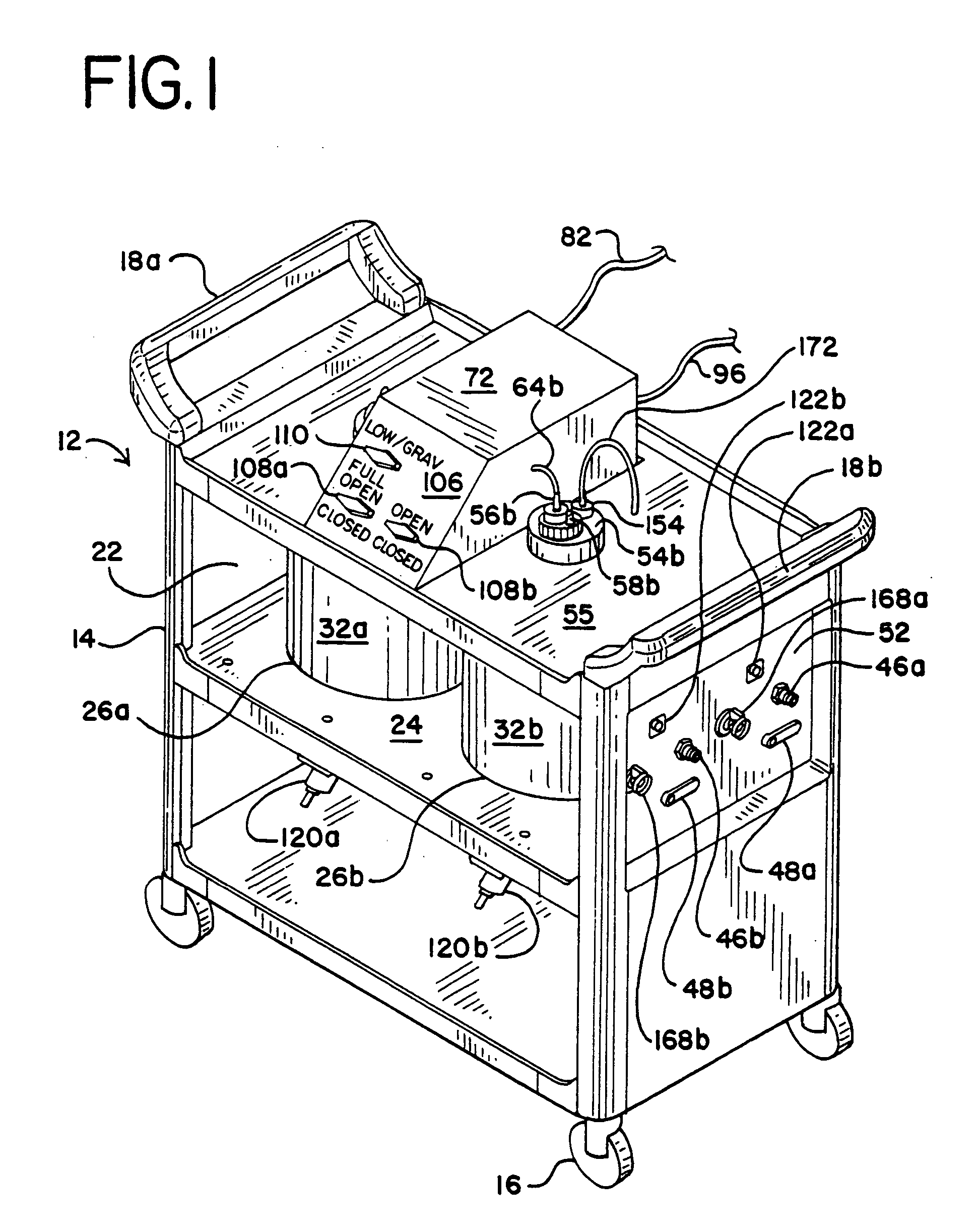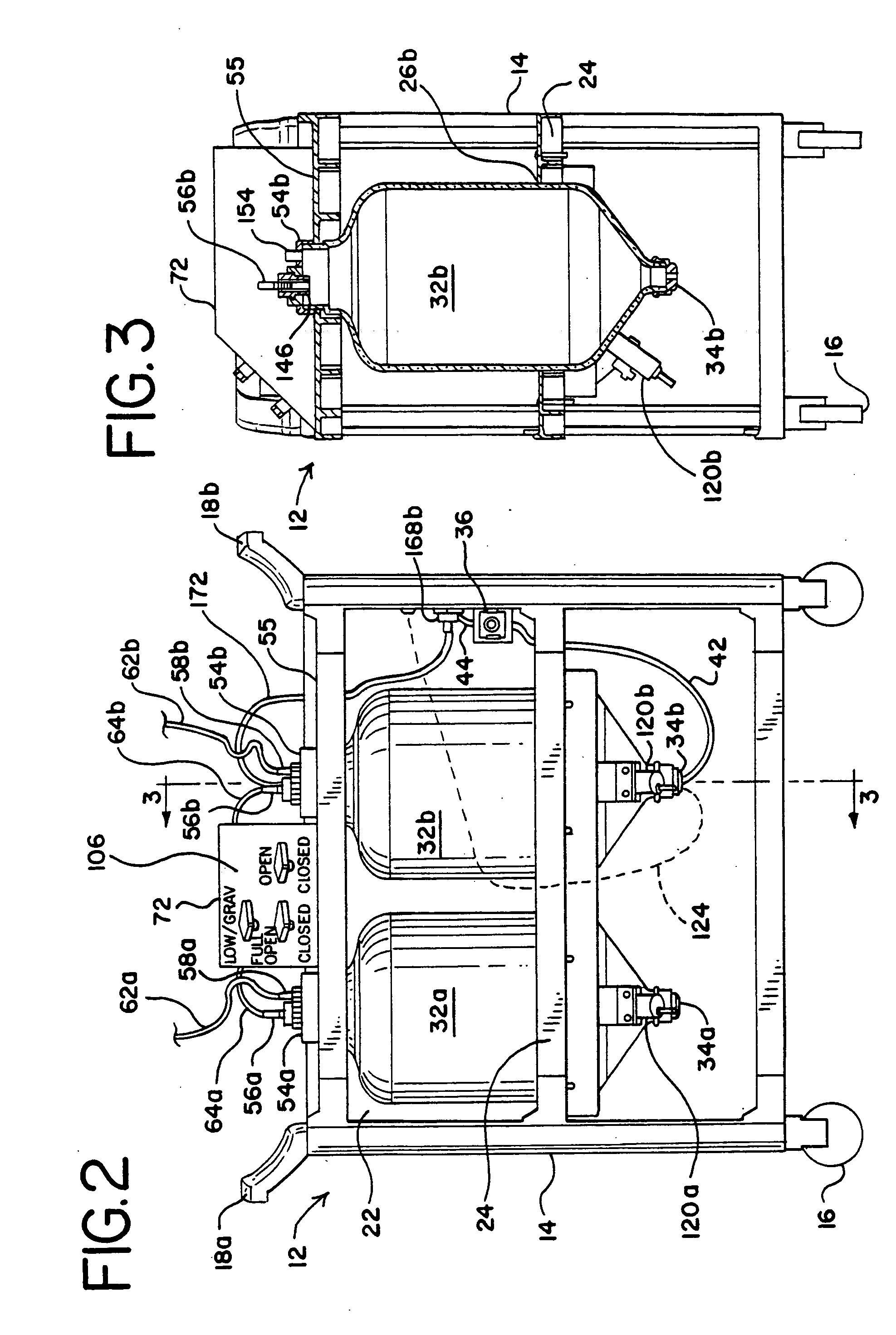High volume liquid waste collection and disposal system
a liquid waste and high-volume technology, applied in the field of biological fluid systems, can solve the problems of contact with potentially infected wastes, high volume of such waste from a single patient, and significant disposal problems of liquid medical was
- Summary
- Abstract
- Description
- Claims
- Application Information
AI Technical Summary
Benefits of technology
Problems solved by technology
Method used
Image
Examples
Embodiment Construction
[0040] The fluid collection cart of a preferred embodiment of the system of the present invention is indicated in general at 12 in FIGS. 1-3. The cart features a cabinet-like body 14 that is supported at its bottom four comers by wheels 16. Opposing handles 18a and 18b are secured to the top of the cart body 14 to facilitate pushing, pulling and maneuvering of the cart. The cart 12 is preferably constructed of plastic for strength, durability and light weight.
[0041] The cart body 14 defines an interior space 22 within which a shelf 24 is mounted. While not illustrated, doors may optionally be provided on the cart so that the interior space 22 is hidden from view when the doors are closed. Shelf 24 features a pair of openings 26a and 26b formed therein within which bottle-shaped containers 32a and 32b are secured. Containers 32a and 32b are preferably constructed of glass for ease of cleaning and are sized to hold approximately six gallons of liquid each.
[0042] As illustrated in FI...
PUM
 Login to View More
Login to View More Abstract
Description
Claims
Application Information
 Login to View More
Login to View More - R&D
- Intellectual Property
- Life Sciences
- Materials
- Tech Scout
- Unparalleled Data Quality
- Higher Quality Content
- 60% Fewer Hallucinations
Browse by: Latest US Patents, China's latest patents, Technical Efficacy Thesaurus, Application Domain, Technology Topic, Popular Technical Reports.
© 2025 PatSnap. All rights reserved.Legal|Privacy policy|Modern Slavery Act Transparency Statement|Sitemap|About US| Contact US: help@patsnap.com



